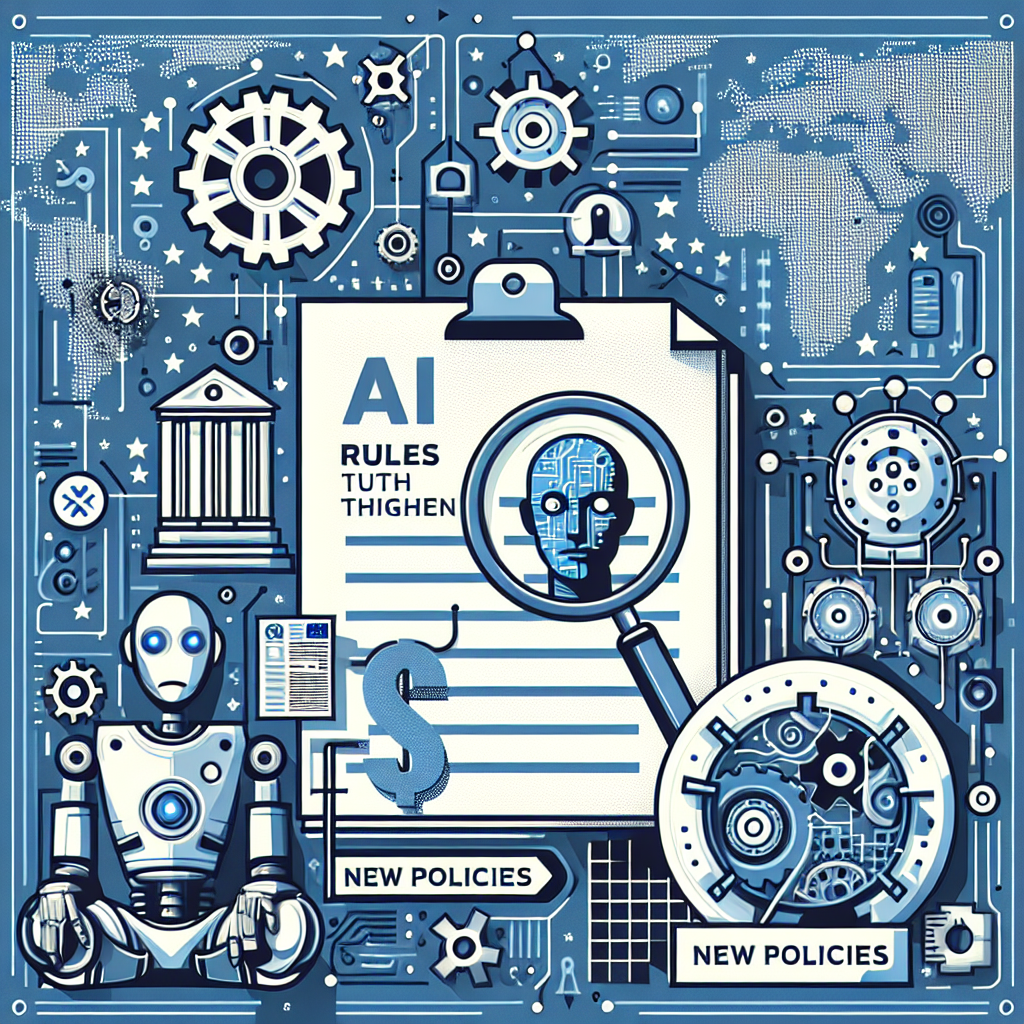AI Rules Get Real: How Businesses Are Adapting

Governments are moving from principles to enforcement on artificial intelligence. The European Union has approved a comprehensive law. U.S. agencies are leaning on existing powers and standards. The United Kingdom is using a regulator-led approach. Companies now face a new reality: AI is no longer an experimental add-on. It is a regulated technology with real compliance expectations, and real consequences for getting it wrong.
What is changing in AI regulation
The EU AI Act is the headline development. It uses a risk-based model. The law bans some uses outright, such as social scoring by public authorities and AI that manipulates vulnerable groups. It imposes strict duties for high-risk systems used in areas like hiring, credit, education, and safety-critical products. Those duties include risk management, data governance, human oversight, logging, and post-market monitoring. There are also obligations for general-purpose AI models, including transparency and technical documentation. Enforcement will be phased in over time, with prohibitions arriving first and high-risk rules following.
In the United States, there is no single national AI law. Instead, federal agencies are applying existing rules. The Federal Trade Commission has warned that deceptive AI claims and unfair outcomes are illegal. The Equal Employment Opportunity Commission and the Department of Justice have said that biased automated hiring can violate civil rights laws. The White House issued an executive order in 2023 instructing agencies to set safeguards and calling for testing and watermarking guidance. Many organizations are aligning to the National Institute of Standards and Technology AI Risk Management Framework, a voluntary but influential standard.
The UK has taken a different path. It asked sector regulators to supervise AI within their domains. It also created an AI Safety Institute to test frontier models and publish evaluations. Other countries are adding their own pieces. Canada has proposed a federal law. Japan, Singapore, and Australia are issuing guidance. And at the state level in the U.S., new rules target automated decision-making. Colorado, for example, passed a law aimed at reducing algorithmic discrimination in high-risk systems, with broad duties for developers and deployers.
Why it matters for business
AI is now embedded in daily operations. It screens job applicants, predicts demand, flags fraud, and powers customer support. For many firms, generative AI now drafts code and marketing copy. The regulatory shift raises the stakes. Failures can bring reputational harm, legal risk, and product delays. Success can build trust and open markets.
Andrew Ng, an AI pioneer, once called AI the new electricity. He said it will transform every industry. At the same time, leaders are warning about risk. Sam Altman, the CEO of OpenAI, told the U.S. Senate in 2023: ‘If this technology goes wrong, it can go quite wrong.’ Policymakers are trying to channel both realities. They want innovation, but with safeguards.
How companies are responding
Large companies and startups are taking concrete steps to prepare. Many are moving beyond aspirational principles to operational controls. Common actions include:
- AI inventory and risk mapping. Firms are cataloging models, vendors, data sources, and use cases. They sort systems by risk, focusing first on high-impact decisions.
- Governance structure. Cross-functional committees bring together legal, security, compliance, and product teams. Some appoint a responsible AI lead with authority to pause launches.
- Documentation and transparency. Teams produce model cards, data sheets, and user-facing disclosures. They log training data decisions and track significant changes to models.
- Testing and evaluation. Security red teams probe for misuse and jailbreaks. Data scientists run bias, robustness, and privacy tests. Many use NIST-inspired test plans and metrics.
- Human oversight. High-risk uses add human review points, clear escalation paths, and opt-outs where feasible.
- Vendor and supply chain controls. Contracts now include audit rights, incident reporting, and compliance warranties for third-party models and APIs.
- Incident management. Companies define thresholds for model failure, drift, and hallucination rates. They create playbooks for rollbacks and user notifications.
- Training and culture. Product managers, engineers, and sales staff receive scenario-based training on lawful and safe AI use.
Many of these steps mirror established patterns from cybersecurity and privacy. The difference is that AI risk blends technical and social elements. It is not enough to patch code. Firms also need to ask whether a model is appropriate for a task, and whether the data reflects the people it affects.
The standards behind the rules
Standards bodies are shaping what compliance looks like in practice. NIST’s AI Risk Management Framework outlines functions such as govern, map, measure, and manage. It also offers profiles for generative AI. The framework encourages documentation, measurement of harms, and continuous monitoring. It is voluntary, but many U.S. agencies and companies treat it as a baseline.
In Europe, harmonized standards will help firms meet the EU AI Act. Technical committees are working on guidance for data quality, robustness, and transparency. Conformity assessments for high-risk systems will rely on this ecosystem. That is why many companies are building controls now. Waiting for deadlines can mean missing the time needed to test and validate models.
Open questions and tensions
Important questions remain unresolved:
- Interoperability. Multinationals want one approach that satisfies the EU, the U.S., and others. Overlap exists, but details differ. Data governance expectations, documentation formats, and testing protocols are not yet fully aligned.
- Audits and assurance. Independent audits are likely to expand. But the scope, frequency, and qualifications of auditors are still forming. Firms worry about sharing sensitive model details.
- Open source and research. Policymakers are trying to support open science while protecting the public from misuse. Clear rules for research exemptions and model release notes would help.
- Startups and costs. Compliance can strain small teams. Regulators say proportionality will apply, but startups remain concerned about the burden of documentation and testing.
- Data and privacy. AI laws intersect with data protection rules. Cross-border data transfers, synthetic data, and consent for model training present complex trade-offs.
What to watch next
Three developments will shape the next year:
- Phased EU enforcement. Prohibited practices will be off-limits sooner. High-risk obligations will follow. Companies should track guidance from European regulators and standards bodies that translate legal text into testable requirements.
- U.S. oversight through existing laws. Expect more cases that treat harmful AI outcomes as violations of consumer protection or civil rights. Agencies will likely reference NIST-aligned practices in their expectations.
- Model evaluation playbooks. Governments and industry groups are publishing benchmarks for safety, bias, and robustness. The UK’s AI Safety Institute and NIST are both active. Clearer, shared tests can reduce uncertainty and speed responsible deployment.
The direction of travel is clear. AI will be governed with a mix of rules, standards, and audits. Companies that treat compliance as an engineering and product challenge, not just a legal check, are better placed to benefit. The prize is significant: safer systems, stronger trust, and access to markets that demand responsible AI.
The risks are real, but so are the tools. As one industry leader put it, effective oversight does not mean slowing down innovation. It means building it on solid ground.
























































































































































































































































































